Genealogy Mistakes and Faux Pas for Beginners- Laugh and Learn From Mine
 Pay Attention to Details: Margaret and I were so lucky to take a trip to her grandmother's home town in the village of Riseley in England. It was so nice to be able to involve her in the genealogy part of my life and I was excited to see her reaction when we finally got there. We toured the church, walked through the graveyard, and visited with the vicar. I insisted that she pose in front of the sign on the outskirts of town for a photo - the outskirts of the wrong town. It turns out that there are two villages named Riseley - one on the map that I purchased before we left California and one in the materials handed down through our family that emphasized Riseley, Bedfordshire, England as grandma's birth place. Sigh . . . I still think it is a nice photo and a really nice town to visit.
Pay Attention to Details: Margaret and I were so lucky to take a trip to her grandmother's home town in the village of Riseley in England. It was so nice to be able to involve her in the genealogy part of my life and I was excited to see her reaction when we finally got there. We toured the church, walked through the graveyard, and visited with the vicar. I insisted that she pose in front of the sign on the outskirts of town for a photo - the outskirts of the wrong town. It turns out that there are two villages named Riseley - one on the map that I purchased before we left California and one in the materials handed down through our family that emphasized Riseley, Bedfordshire, England as grandma's birth place. Sigh . . . I still think it is a nice photo and a really nice town to visit.Back Up Your Data: This is a lesson that seems to go into short-term memory. It seems that everyone has a story about losing a document and losing a day's work; How about losing a genealogy file with 25 years of effort invested? It is a disaster compared to other similar computer losses. Still not likely to change your ways? In order to mitigate your losses you should share. Share with relatives by trading gedcom files and share with the world by publishing your info online. These two things effectively back up your information on other computers so that a loss at home can be recovered.
 Get Permission to Visit: We tried to get permission to visit our distant relatives in Switzerland earlier this year and couldn't get contact information. Your relatives may not be prepared for a reunion when you just show up on their doorstep. Our last-minute visit was cordial and fun considering that they hadn't received so much as a Christmas card from us in over 250 years. An additional issue that I hadn't considered is that the people living in the original homestead may have received more visits before we got there since the original line of this family has expanded to over 100,000 people in the US alone. Thinking about the possible implications of that number makes me think that our relatives are saints - or at least something more than just really nice people like we originally thought.
Get Permission to Visit: We tried to get permission to visit our distant relatives in Switzerland earlier this year and couldn't get contact information. Your relatives may not be prepared for a reunion when you just show up on their doorstep. Our last-minute visit was cordial and fun considering that they hadn't received so much as a Christmas card from us in over 250 years. An additional issue that I hadn't considered is that the people living in the original homestead may have received more visits before we got there since the original line of this family has expanded to over 100,000 people in the US alone. Thinking about the possible implications of that number makes me think that our relatives are saints - or at least something more than just really nice people like we originally thought.Precise Descriptions: Many genealogists start with newsgroups, email groups, and online discussions because they are good places to get in touch with distant relatives. It's a great idea to find out if someone has already done the work before you invest 25 years. When you get involved in those types of places, you find that many beginners make the mistake of using general language in titles and subject lines - like "My Family" or "Grandparents." These are the short blurbs listed on the web site or in the email that people scan to see if they want to read your message or not. The problem with general language is that the people who scan the list don't know if they should read your post or not. You want people to read your post, but your really want the right people to read your post. A good subject line tells me who the post is about; name, location and date range. You can also include an event if you have that like birth, death, or marriage. One good example is "Langenegger, Ulrich b 1664 in Langnau, Bern, Switzerland." You can't really identify a person with less information than name, date and place. No matter how unique your relative's name, there are bound to be others when you consider all locations and all time.
Publishing Data on Living People: There are bad people out there who try to get information about others so that they can use their name and reputation to cheat people. Many security systems have used Social Security numbers and your mother's maiden name as identification. The better systems do much more these days. Still you shouldn't publish anything on the Internet that includes unique identifiers like Social Security or driver's license numbers. My genealogy software includes a filter that allows me to publish my file and replaces living people's information with "Still Living" or "Not Available." People in your file who are less than 120 years old and who don't have a death date should be assumed living for this purpose.
Prove Relationships: You should satisfy yourself that a person is really related to your family before you include them in published information. Proof is a bit of an issue sometimes and it means something different to every genealogist - sometimes different things to the same genealogist in different situations. I made a three hour trip one time to meet a distant relative who turned out to be not related at all. We have sent each other emails and joked about this meeting many times - just like family and still a great experience.
I have on occasion accepted a simple interview with a person who knew the person in question personally as proof, especially if I can confirm the information from two or three additional people. Generally, I require two bits of public information to prove a person. That kind of proof is not always available and sometimes I am content with just putting a person in my tree as a place holder (and marking it clearly as "Unproven").
Don't Believe Everything You Hear: I had a detailed family story about Mary Martha Higginbotham that came from my mother and her sister that included dates, names, and places. My uncle wrote about this person in somewhat less detail. When I finally got to the LDS Library in Salt Lake, I was determined to unravel this mystery - really aiming to routinely prove the family story. I found some great data for Nancy Matilda Higginbotham born on the same date as the family story in Macon County, Missouri and who lived in Gage County, Nebraska. I refused to believe the public record because the names were different from the family story even though all of the other details fit. "It must be her twin sister" I thought. My brothers were mystified that I would continue to search when faced with so much proof. I can't really defend myself, but I was just curious about how this story could have been wrong. I finally accepted the public record after I found Nancy Matilda's grave in Oklahoma on the same plot as my grandfather's first wife. Turns out that my uncle's recollection with less information was a more accurate story than my mother's. The lesson is this: Don't believe everything that your family tells you - or that anyone else tells you; Prove everything to your own satisfaction.
Proper Caution Notices: When you first started, someone helped you. After you have some experience, you will help someone else. Genealogists are some of the nicest people in the world and your generosity will pay dividends when you need help yourself - even without any dividends, you are just paying the people who helped you. One caution about sharing: be careful to quote sources and to give proper cautions to people who read your information. If you are not sure about a relationship, person, or date, make sure that you clearly say that and include it in your written information. It is amazing how many times I have gotten a hot lead on my current brick wall with someone who quotes another researcher and when I contact the other researcher, they quote me as the source. Those events have slowed for me since I started giving proper precautions along with the data that I share. I also stopped publishing data online that is not proven to my satisfaction because it was not clear enough to the reader no matter how many cautions I included.
Please keep in mind that we look back on these experiences as fun learning experiences - not the embarrassments they seemed to be at first. Have fun with genealogy; even the gaffs turn out to be fun.
Gene Hall is a genealogist with 30 years of research experience and the CEO of FamilyTrackers, Inc., a world-wide genealogy exchange dedicated to serving the needs of genealogists, genealogical societies, professional genealogists, and transcribers all over the world. FamilyTrackers is located at http://www.familytrackers.com/ .
This article comes with reprint rights. You are free to reprint and distribute it as you like. All that I ask is that you reprint it in its entirety without any changes including this text and the link above.
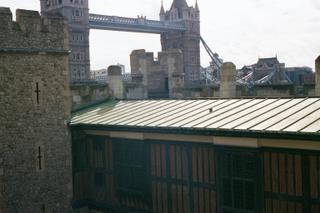 Taos a few years later. This Mamby character said that Taos was a paradise in New Mexico where everyone was settling. I guess dad was ready for a change or something. He packed all their things and came directly to Taos along with mom and Doris. When they got here, there was nothing but the pueblo and a handful of people living in town. There was no blacksmith in town and dad opened a shop - the first in Taos.” This story from Thomas George Hinde about his parents’ trip from England was just the beginning of our search for our Hinde Family’s English roots.
Taos a few years later. This Mamby character said that Taos was a paradise in New Mexico where everyone was settling. I guess dad was ready for a change or something. He packed all their things and came directly to Taos along with mom and Doris. When they got here, there was nothing but the pueblo and a handful of people living in town. There was no blacksmith in town and dad opened a shop - the first in Taos.” This story from Thomas George Hinde about his parents’ trip from England was just the beginning of our search for our Hinde Family’s English roots.
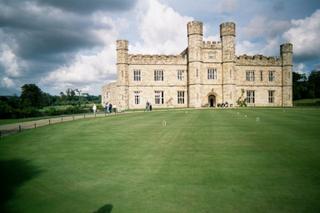


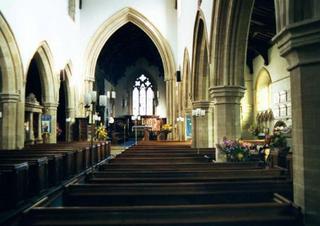

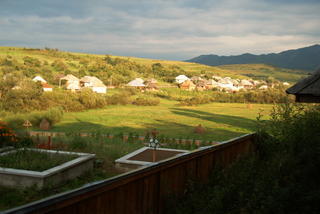
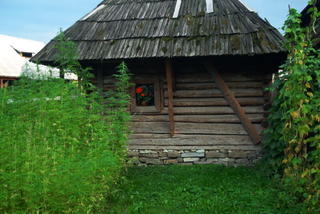


 A Covered Walk Bridge in Langnau
A Covered Walk Bridge in Langnau  Langenegger Cows in the Barn to Stay Cool
Langenegger Cows in the Barn to Stay Cool 
